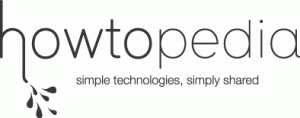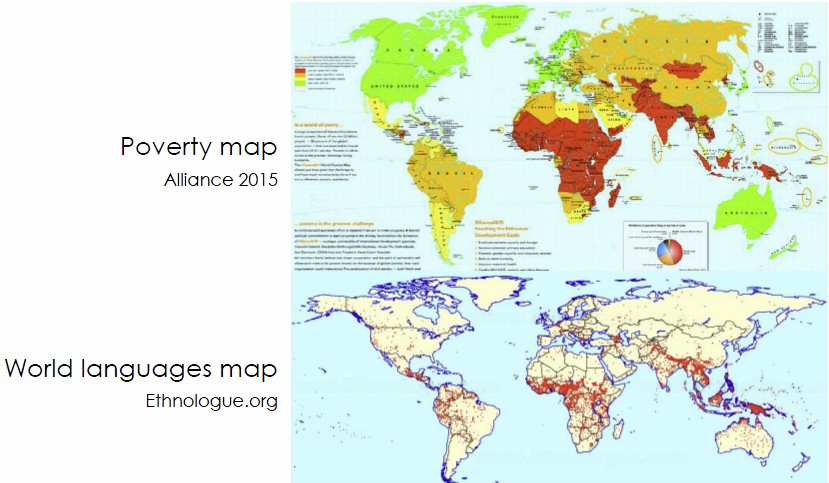 My mind is still bleeding with inspiration from Web Monday Zurich #12. I sometimes paint and at some point I get into a sort of trance with the colors and shapes that paint themselves on to the canvas – the madness takes over and I think I’ll crawl out of my skin. I admit this is an overly dramatic way to describe my reaction to a Geek gathering about web startups, but I don’t watch much TV, and never got into drugs – so it stands to reason that I have to get my kicks from somewhere – and in die Schweiz, there’s no Route 66. I keep thinking that one day I’ll get bored at these web gatherings but my mind is always on fire by the end of the night and I count the days till the next one. There were three topics at Web Monday Zurich #12 including, Memonic.com, the UBS Web 2.0 contest winners were revealed, and HowToPedia.org got my neurons moving. It was held at the offices of LIIP/Nektoon, and drinks were sponsored by UBS.
My mind is still bleeding with inspiration from Web Monday Zurich #12. I sometimes paint and at some point I get into a sort of trance with the colors and shapes that paint themselves on to the canvas – the madness takes over and I think I’ll crawl out of my skin. I admit this is an overly dramatic way to describe my reaction to a Geek gathering about web startups, but I don’t watch much TV, and never got into drugs – so it stands to reason that I have to get my kicks from somewhere – and in die Schweiz, there’s no Route 66. I keep thinking that one day I’ll get bored at these web gatherings but my mind is always on fire by the end of the night and I count the days till the next one. There were three topics at Web Monday Zurich #12 including, Memonic.com, the UBS Web 2.0 contest winners were revealed, and HowToPedia.org got my neurons moving. It was held at the offices of LIIP/Nektoon, and drinks were sponsored by UBS.
Dorian Selz from Nektoon presented Memonic – a website where you “keep the essential” of your web journeys and save only what you need. I first saw Memonic at the UX Chuchi where we discussed their user interface and overall design. The current site looks a lot tighter than the initial offering and is serious competitor for a site I will actually use day to day. Basically, with Memonic you save elements of webpage you visit, and then organize those elements on your Memonic account. It was developed based on the needs Dorian and his colleagues saw as well as their experiences in their own web travels. Basically you go to a webpage, then click on a bookmark for Memonic, and you then can pick paragraphs of text, pictures, make multiple selection, basically click whatever is on the webpage, and these elements are saved to your account. Or you just bookmark the site as well. The point of course is that you just take those pieces which you need, and then can access that information quickly. You can also export that information in an email, to a twitter account, facebook, and also to a smart phone. This is great for traveling and really takes information storage beyond bookmarking, and therefore much more useful in daily life. These saved elements can be organized into sets on your account and that way organized. It’s similar to tagging, and then clicking on a set and getting all the saved information. Naturally you can have multiple sets, as pieces of information rarely fit in only one category, which is more how we store and access information in the brain.
“But, how do you make money?”
The business plan is always the first question at Web Monday during the question and answer session. Basically Memonic currently offers a free service, and later will offer a paid service with more functionality. These models are on a Business to Customer (B2C) design, but they also have ambitions to do Business to Business (B2B) to fulfill the needs of companies. Also in the future there are plans to actually use the information you’ve stored on Memonic as a search filter while you surf the web. So, it will be possible to analyze the stuff you’ve saved to Memonic, and use that as a filter to direct internet searches, which means a user should end up with more relevant search results (relevant to their needs) – very cool. When I think of competitors to Memonic I think of Zootool, but there’s also a US site called Evernote (which I had never heard of). I like Zootool because it’s based around saving imagery (the downside is that it doesn’t do text like Memonic), and is more of a visual-media/micro-blogging/almost-like-Flickr service, which also reminds me of Tumblr. Zootool operates very similar to Memonic when it comes to saving content and in my opinion currently has better social network integration (easier to share stuff) – but I see a lot of potential with Memonic for the future.
So, basically UBS sponsored a contest to learn about Web 2.0 and banking applications. Andreas Hoffman and his colleagues awarded 5000 CHF for the three best presentation of ideas concerning what UBS should be doing with web 2.0 to connect with their customers. Winners included Go beyond ebanking today (Roland Studer), Collaborative Filtering (Amancio Bouza), and UBS Super Trader (Martin Moser and Roger Singer). To a certain extent, the presented ideas were not ground breaking in the sense of new technology, but rather applying existing ideas to the question of Web 2.0 and UBS banking applications. But this is how many great shifts in technology occur, not by totally new inventions, but by interpreting existing technology in new ways and applying them to new areas (Idea Generation and Development – Startup 2009 Basel). Overall many ideas were similar to what is currently being done in other places like Amazon.com or other websites which focus on customer interaction. The point was to apply those principles to a UBS business model. In my opinion the main idea is to give more freedom of interaction to the client, and not keep them fully dependent on the client advisor. I sent in a entry as well, basically I said they need to empower the Web 2.0 client, but I don’t think I was really able to communicate the concept I have in my head. Roland posted his entry to his blog in a post titled, Go beyond ebanking of today.
I think UBS should be awarded some sort of uber Web 2.0 Technology award for their efforts and I’m happy to say I’m a UBS banking customer, and I’m looking forward to seeing what they come up with. The banking world is generally seen as having linear thinking and business practices. I’ve been reading/listening to “Break from the Pack – How to succeed in a Copycat Economy” and I’m really impressed that UBS is taking initiative to educate themselves on the Web 2.0 opportunities. They’re helping to define the future of banking instead of waiting for someone else to do it, but without knowing what the eventual outcome will be for their profits. This is the exact type of dynamic, non-linear thinking companies should be doing to break from the pack and lead their industries. Plus, Andreas Hoffmann came to the Zurich web community and partnered with Dania Gerhardt (Amazee.com) to setup the competition. It’s good for UBS, good for the participants, good for technology and idea development, and there’s more to come. UBS also plans on putting together a small consultancy team from three of the competition participants to do a business study and presumably help develop their Web 2.0 platform, really awesome initiative – they should get a write up in Forbes.
It was the last presentation of the night that really set my mind on fire. As my first beer was wearing off and before I had time to grab another one, Maud Châtelet talked about HowToPedia.org, a non-profit website with the goal of empowering people in developing countries and enabling for autonomous, sustainable development in their lives. Maud started by showing two world maps. On the first was plotted the areas of poverty. On the second, the number of languages within a certain geographic region. If you superimpose onto the other, they more or less match up perfectly. The basic conclusion is that difficulty in communication is a significant factor in the development of people and technology in their lives. So how do we empower people to change that trend?
The goal of HowToPedia is to manage and distribute practical knowledge to people throughout the world, which they can use to improve the quality of their lives. To me this is like empowering the engineer in all of us, no matter our educational background. I personally think everyone is a poet and an engineer, an artist and a scientist, and that you don’t need to study in a university to practice these things in your life. So, through the website, practical knowledge is presented such as, purifying water, how to build a windmill, or even making sandals from old tires. To reduce communication barriers a goal is to translate this information into various languages, so that a maximum number of people can use it. This type of information exists on other sites, but the point is for howtopedia.org to be the main place for knowledge management, so that various organizations aren’t duplicating their efforts and wasting resources. The information is for free, but the site needs money to work, so at the moment there’s a focus on fundraising. I’ve been interested in getting into a program like this. I know a couple people doing Engineering Without Borders in the US, but I haven’t been able to find EWB in Switzerland, plus I love the idea of empowering through knowledge distribution, so it looks like howtopedia could be a good way for me to give back with my engineering skills.
So, Web Monday Zurich rocked hardcore. If you’re interested in more info on the Startup scene around Switzerland check out :
StartWerk.ch (their German reporting on Web Monday #12)
Think of attending StartupCamp Switzerland 2010 on Feb. 13th in Basel
Check out Web Monday Zurich on Amazee.



